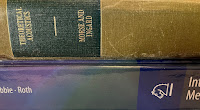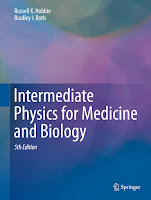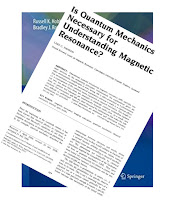A classic textbook by Morse and Ingard (1968) provides a more thorough coverage of theoretical acoustics.
 |
| Theoretical Acoustics, by Morse and Ingard. |
Morse PM, Ingard KU (1968) Theoretical Acoustics. McGraw-Hill, New York.In order to describe Morse’s life, I’ll quote excerpts from his obituary in the February, 1986 issue of Physics Today, written by his coauthor Herman Feshbach.
It was at Case [School of Applied Science, now Case Western Reserve University] that his lifelong interest in acoustics began. Morse received his BS in 1926, and pursued his graduate studies at Princeton University. It was a very exciting time, as the new quantum mechanics was the focus of attention.Anyone who’s studied the vibrational states of molecules will probably have seen the Morse potential.
He wrote several papers alone and with Ernst Stueckelberg on molecular physics—in one of these he developed the “Morse potential.”The Morse potential looks like the function plotted in Fig. 14.8 of IPMB, although we didn’t mention Morse by name in that chapter.
Morse joined MIT on the faculty. There he taught acoustics and quantum mechanics.
He gave advanced instruction to the brighter undergraduate students. One such undergraduate was Richard Feynman and the subject was quantum mechanics. At this time he renewed his interest in acoustics. A consequence was his book Vibration and Sound (1936), which he revised and expanded with Uno Ingard in 1968. Of equal importance to his book was his impact on the field: He brought up to date the methods employed by Lord Rayleigh and applied the results to practical problems of, for example, architectural acoustics.Although Morse was not involved in the Manhattan Project, he did do applied physics research during World War II.
He and his colleagues played a decisive role in the defeat of the German submarine campaign. He gave a fascinating account of that effort in his autobiography, In At The Beginnings: A Physicist’s Life.As influential as Morse’s book on acoustics is, his best-known book is probably the two-volume Methods of Theoretical Physics with Feshbach. That book is a little too advanced to be cited in IPMB, but I remember consulting it often during graduate school.
 |
| Handbook of Mathematical Functions, with Formulas, Graphs, and Mathematical Tables. |
Morse was the driving force behind the useful Handbook of Mathematical Functions, edited by Milton Abramovitz and Irene Stegun and produced by NBS [National Bureau of Standards] in 1964.Feshbach concluded
Morse’s was truly a distinguished career, characterized by a unique breadth and fostered by his wide range of interests and his ability to initiate and develop new ventures. He was a dedicated scientist, or better, natural philosopher. As he wrote: “For those of us who like exploration, immersion in scientific research is not dehumanizing; in fact it is a lot of fun. And in the end, if one is willing to grasp the opportunities it can enable one to contribute something to human welfare.”Would Morse have considered himself a biological physicist? Probably not. But his main interest was acoustics, and sound perception is inherently biological. In a few places Theoretical Acoustics deals with the physics of hearing. I’m comfortable declaring him an honorary biological physicist.






















